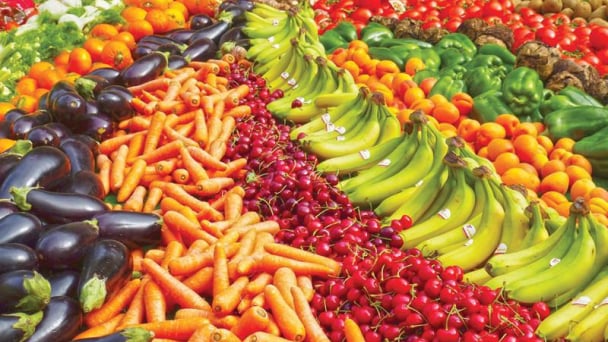May 20, 2025 | 19:51 GMT +7
May 20, 2025 | 19:51 GMT +7
Hotline: 0913.378.918
May 20, 2025 | 19:51 GMT +7
Hotline: 0913.378.918

Develop and diversify rice export markets.
The overall goal of the strategy is to develop and diversify rice export markets with a reasonable, stable, and effective scale, market structure and product structure; consolidate traditional and key export markets and develop new and potential export markets as well as FTA markets; increase market share of Vietnamese rice in export markets, especially in developed countries.
The strategy also aims to associate the export market with the domestic production scene in line with the value chain, ensure the quality and safety of exported rice; increase the introduction of Vietnamese rice products and rice-based products into direct distribution channels in foreign markets; export high quality, high value rice and rice-based products, improve product value, ensure sustainable export efficiency, and affirm Vietnamese rice’s prestige and brand.
As for the specific goals, the strategy focuses on increasing added value and improving the export value of rice, reducing export volume by 2030 to 4 million tons with a turnover equivalent to approximately USD 2.62 billion. As the export volume reduces, the average export growth rate will decrease by an estimated 2.4% in the 2023 - 2025 period and 3.6% in the 2026 - 2030 period.
In the 2023 - 2025 period, the proportion of low and medium grade white rice will account for no more than 15%; high-grade white rice accounts for approximately 20%; fragrant rice, japonica rice, specialty rice account for approximately 40%; sticky rice accounts for approximately 20%; rice products with high added value such as nutritious rice, parboiled rice, organic rice, rice flour, rice-based products, rice bran and some other rice by-products account for approximately 5%. The rate of exported rice with brands will exceed 20%.
In the 2026 - 2030 period, the proportion of low and medium grade white rice will account for no more than 10%; high-grade white rice accounts for approximately 15%; fragrant rice, japonica rice, specialty rice account for approximately 45%; sticky rice accounts for approximately 20%; rice products with high added value such as nutritious rice, parboiled rice, organic rice, rice flour, rice-based products, rice bran and some other rice by-products account for approximately 10%. The rate of exported rice with brands will exceed 40%.
The proportion of rice exported directly to the distribution systems of foreign markets will increase to approximately 60%. Export efficiency is increased through intermediary channels, especially for markets that are not convenient in transportation and payment. Striving to have 25% of rice exported directly under the brand Vietnam Rice by 2030.
The market structure will be adjusted in accordance to restructure the export market and the trend of the world rice market.
By 2025, the Asian market will account for approximately 60% of the total rice export turnover, the African market will account for approximately 22%, the Middle East market will account for approximately 4%, the European market will account for approximately 3%, and the European market will account for approximately 3%. America accounts for approximately 7%, Oceania market accounts for approximately 4%.
By 2030, the Asian market will account for approximately 55% of the total rice export turnover, the African market will account for approximately 23%, the Middle East market will account for approximately 5%, the European market will account for approximately 5%, and the European market will account for approximately 5%. America accounts for approximately 8%, the Oceania market accounts for approximately 4%.
The general orientation of the strategy is to restructure the export market towards sustainability, effectively utilize the rice import demand of key and traditional markets, and at the same time focus on developing markets with high demand for imports of high quality, high value rice and rice-based products, markets with sustainable trade and investment partnerships, and FTA markets.
Vietnam’s rice industry should make full use of the competitive advantage to strengthen the position and effectively exploit the near, traditional and key markets that have the demand for rice import while putting into consideration the current production conditions; develop new and potential markets, increase the proportion of markets to import high-quality, high-value-added rice; increase exports to FTA markets with preferential treatment for rice; gradually reduce the proportion of rice import markets with unstable quality, low added value and efficiency; make good use of suitable market niches in all market regions.
The proportion of high-grade white rice and long grain rice should be maintained at a reasonable level (15-20%), reduce the proportion of low and medium grade rice; increase the proportion of fragrant rice, parboiled rice, Japonica rice, organic rice; diversify products processed from rice, for example, rice with micronutrients, rice flour, and cosmetics from rice.
The decision clearly stated, “In the context of increasing competition between exporting countries and the world rice trade facing many unpredictable developments such as natural disasters, epidemics, military conflicts, trade wars, in order to develop the export market of Vietnamese rice, taking the needs and tastes of the market to orient production and export, ministries, branches, localities, associations and rice exporting businesses needs to synchronously deploy 5 groups of specific solutions: 1- Improve institutions; 2- Solution on supply; 3- Solution on demand; 4- Solutions on export support; 5- Solutions on capacity development of the private sector”.
Translated by Samuel Pham

(VAN) Oliyar, a prominent Ukrainian oil and fat manufacturer, has revealed plans to build a farm for 2.3 million laying hens in the Lviv region. The additional production quantities promise to change the competitive landscape of the egg market of the Eastern Europe region.

(VAN) On May 15, Ministry of Agriculture and Environment of Vietnam hosted the 'Connecting Vietnam - Germany agricultural, forestry and fishery trade' seminar in Berlin, Germany.

(VAN) In the face of counterfeit and imitation products, Khanh Hoa Salanganes Nest Company hopes for the prompt completion of the legal framework, strict enforcement against violations, and protection of the bird’s nest brand.

(VAN) Japan's efforts to lower the price of rice through the release of its stockpile may finally be making some progress, albeit at a snail's pace.

(VAN) U.S. tariffs are not only a 'shock', but also an opportunity for Vietnamese businesses to renew their mindset toward comprehensive development.

(VAN) As Bac Giang lychee enters the harvest season, Minister Do Duc Duy expects that the fruit will contribute greatly to agricultural exports due to standardized production and deep processing.

(VAN) Consumers have shown a preference for free-range eggs, but those farming systems are more vulnerable to biosecurity risks like bird flu.